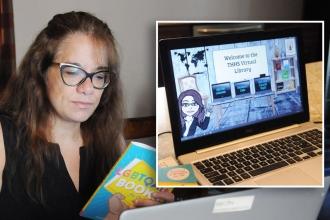Teaching
Google Classroom: Tips and tools
Google Classroom is easy for novices to use. But it’s also a highly versatile platform. Three New York City teachers share their tips and favorite tools for teaching remotely with this powerful program.
Using memoirs helps students understand the Holocaust
Lisa Berke, an English teacher at Edward R. Murrow HS in Brooklyn, teaches a course on Holocaust literature through the lens of memoir because she believes in its ability to cultivate empathy.
Librarians provide path to digital resources
What’s a library without a room full of books? It may sound like a riddle, but it became the reality for school librarians when New York City public school buildings closed in the spring of 2020.
The benefits of Google Classroom
Teachers using Google Classroom have found that the platform has the potential to foster collaboration with colleagues and communication with families. It also poses a challenge: striking the right balance between consistency and flexibility.
Virtual learning for early childhood students
Early childhood educators face a unique challenge with remote learning. In our classrooms, learning occurs through hands-on experiences guided by an intentional facilitator. How can we recreate this virtually?
Assessing effectiveness of remote learning
Is remote learning effective? Here are some ways to find out.





